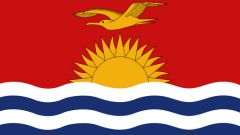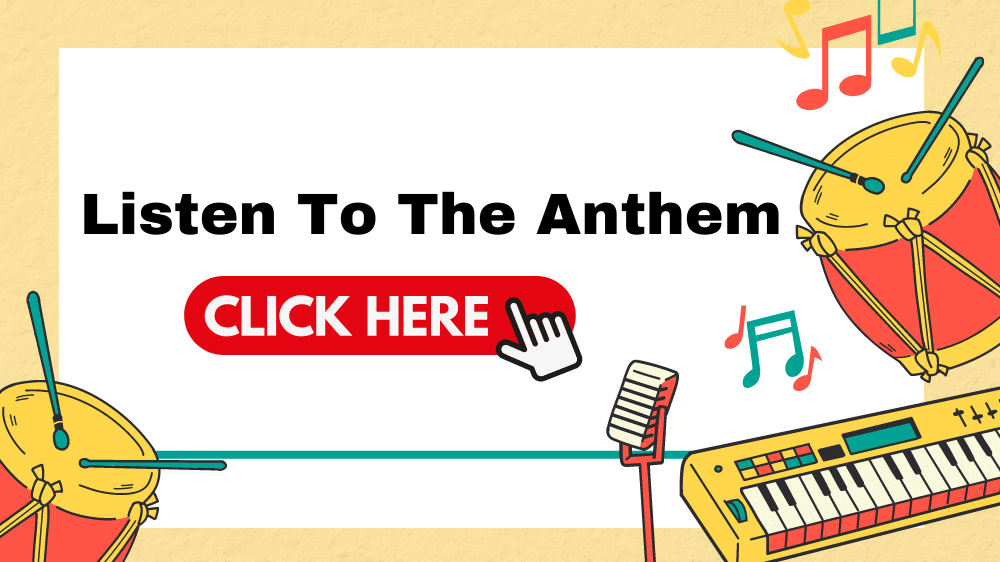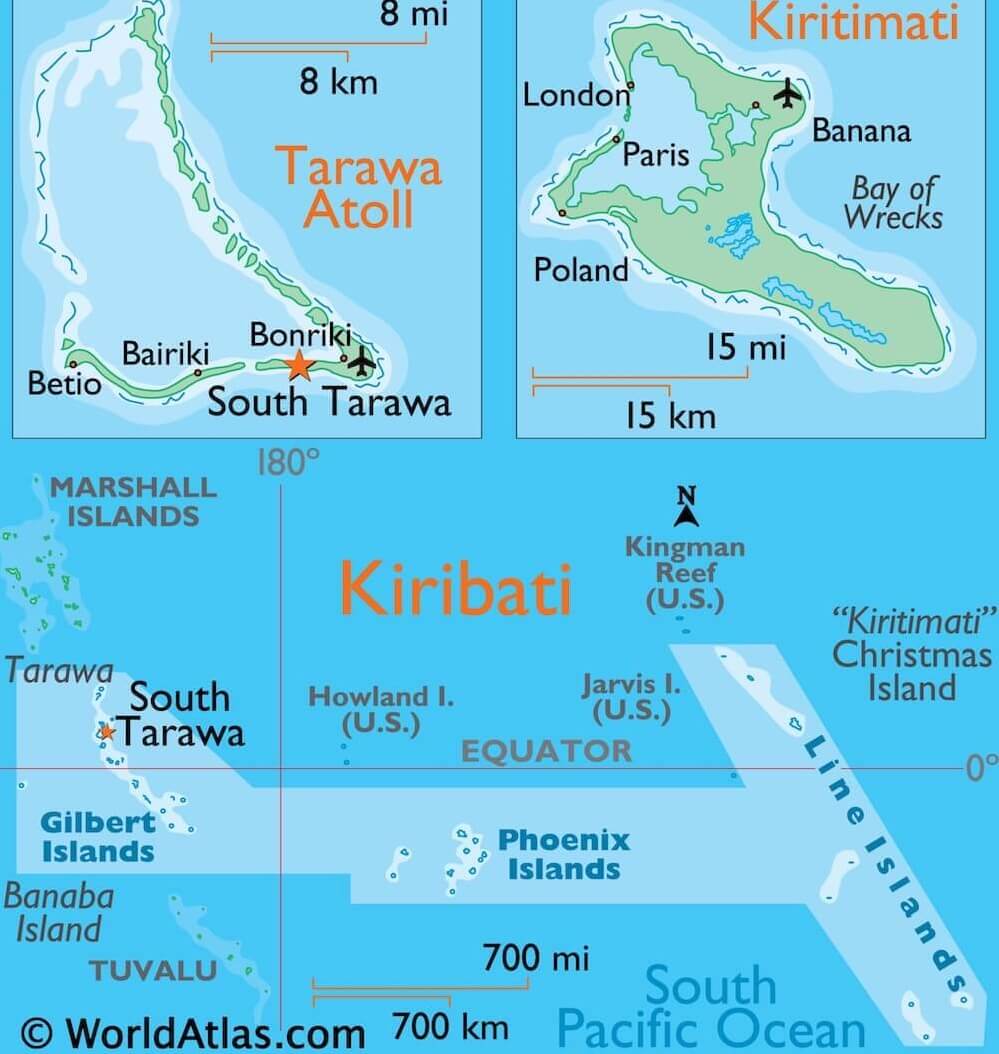Facts About Kiribati
25 Kiribati Facts for Kids
Here are some interesting facts about Kiribati which were chosen and researched especially for kids.
1. Kiribati is an island nation in Oceania. The country includes three island groups and consists of 32 atolls and one coral island called Banaba.
Only 20 of the 32 atolls are inhabited. The country is severely affected by rising sea levels.
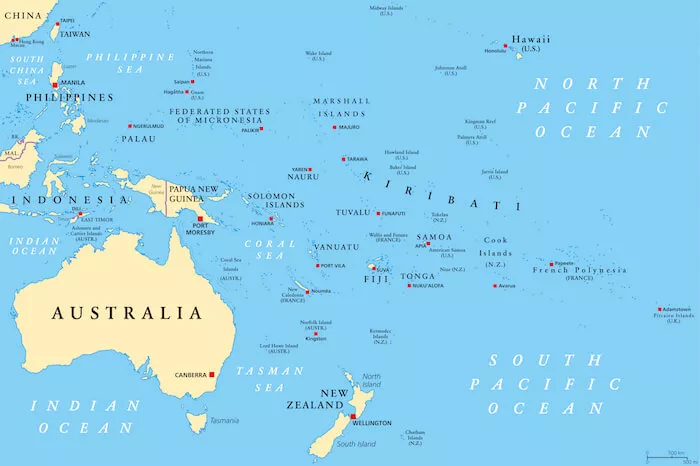
2. Kiribati is pronounced as ‘Kiri-bas’ as the locals pronounce the ‘t’ as an ‘s’.
3. Kiribati is the only country in the world that has islands spread across all four hemispheres! The Republic of Kiribati belongs to the region of Micronesia (not the country!) and the atolls are spread around the equator.
4. The nearest neighbouring nation is Nauru. Kiribati is located about halfway between the US islands of Hawaii and Australia.
5. The capital is South Tarawa which is located on Tarawa island, where the parliament and some government buildings are located.
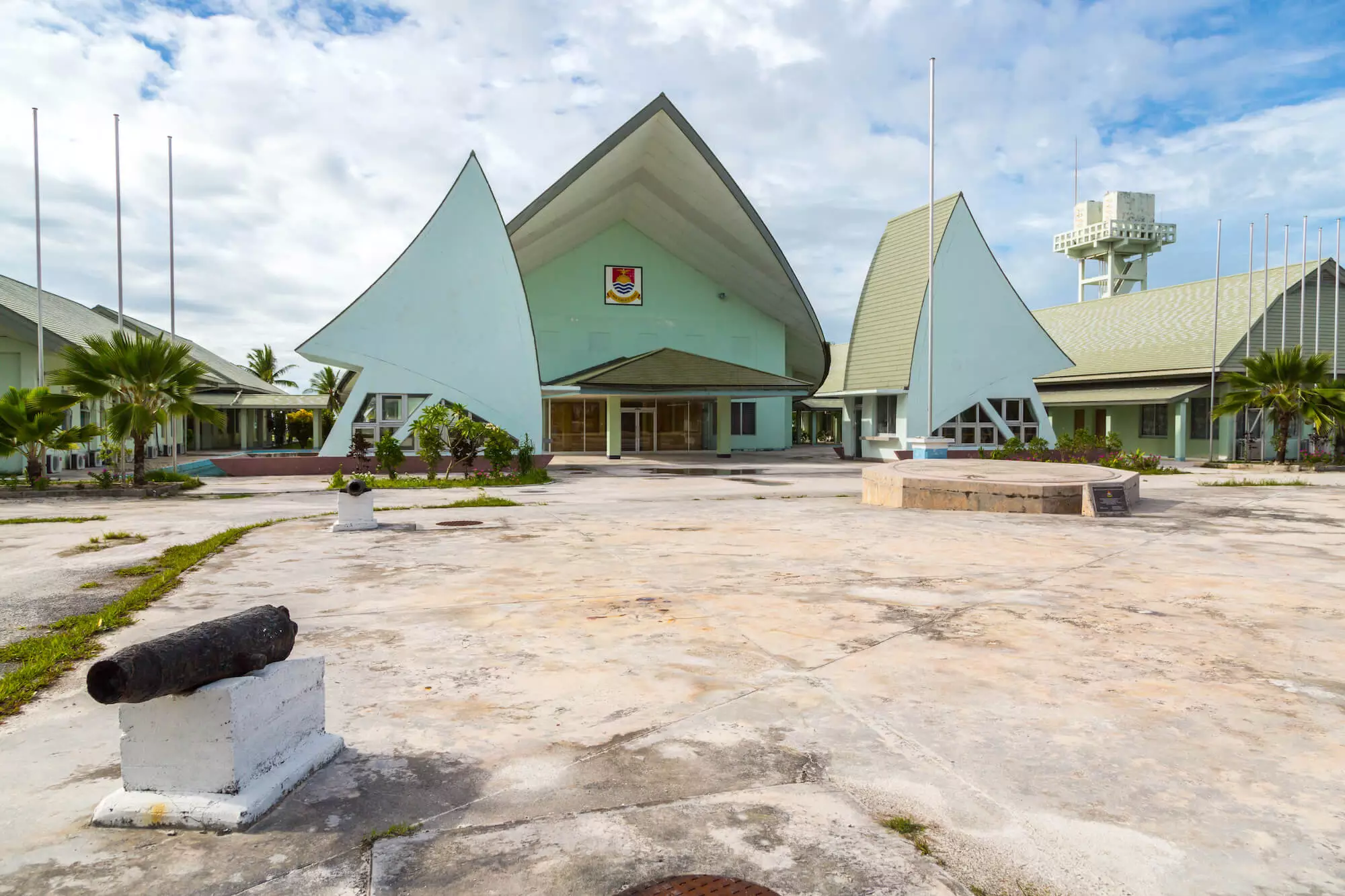
6. Kiritimati or Christmas island is the largest atoll in the world that is formed by corals.
The name Kiritimati is pronounced differently in the Gilbertese language of the local people. They pronounce the ‘t’ as an ‘s’, thus the island’s name “Christmas island”
Facts about Kiribati | People
7. The people are referred to as i-Kiribati. Most of the i-Kiribati live from subsistence farming and fishing.
About 120,000 people live in Kiribati. More than half of all islanders live on Tarawa island.
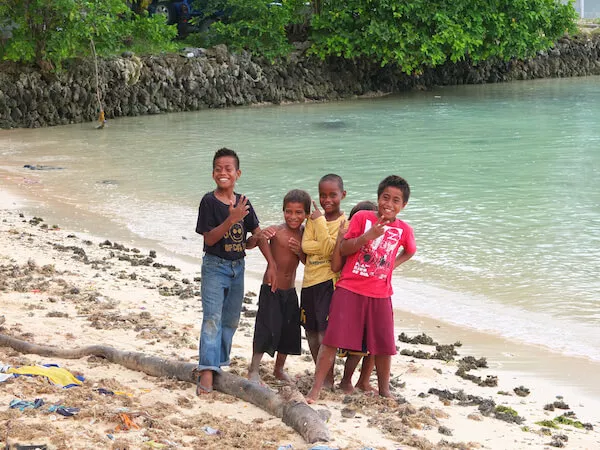
8. Many young people move off the island, as there are little opportunities to find jobs and or they want to study which is only possible overseas.
9. The official language of Kiribati is Gilbertese. English is widely spoken and understood. “Mauri” means “Hello” or “welcome”. “Eng” means “yes” or “okay”.
10. Kiribati was settled as early as 3000 BCE by Austronesian peoples. Later Polynesians and Melanesian people came to the islands to settle there as well. The first European explorers visited the islands in the 17th century. In the 18th the British claimed the islands and some islands were occupied by the Japanese in World War II. Only in 1979 the country became independent.
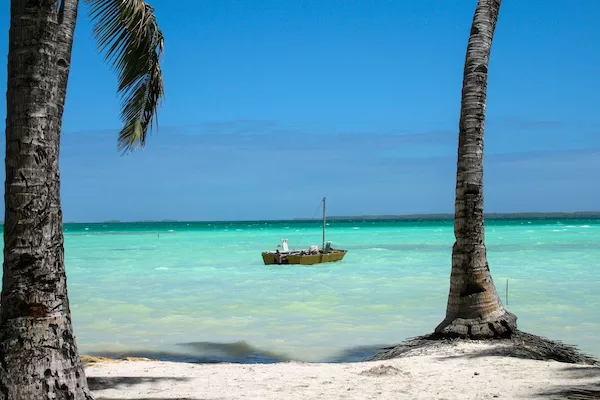
11. The most popular sports in Kiribati are Australian rule football, volleyball and canoe racing.
12. More than 90% of the i-Kiribati are Christians.
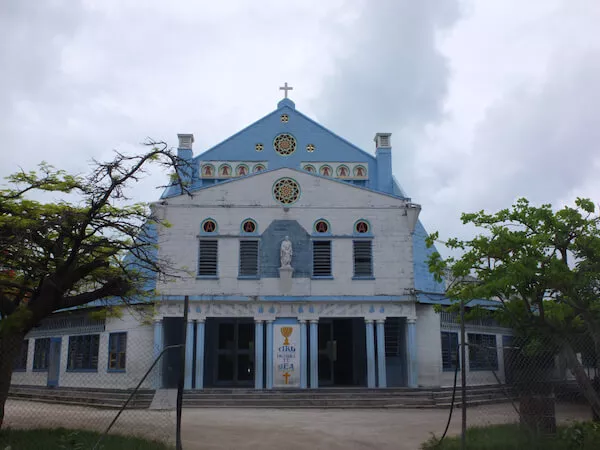
Facts about Kiribati | Geography
13. The tiny country is one of the countries threatened most by climate change. One of the atolls experiences complete flooding and is since submerged by sea water. Kiribati is one of the countries that is feared to become inhabitable by 2100 according to UN reports.
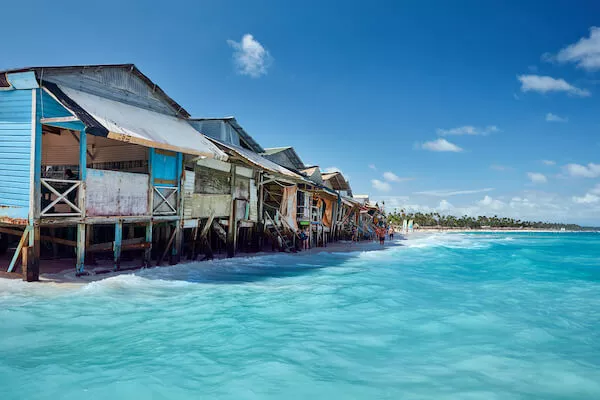
14. The climate is hot and humid in Kiribati and average temperatures are around 26°C and 32°C/ 79°F – 90°F throughout the year. The wet season last from November to April.
15. The highest point of the country is on Banaba, which is a raised coral island and only 81 m/ 266 ft above sea level. The island was once was rich in phosphate rock but due to extensive mining the island’s center is not inhabitable anymore.
16. The national flag colours are red, blue and white with a yellow sun representing the sun and sea and the frigate bird or seabird represents power and freedom. The 16 rays of the sun refer to the Gilbert islands and Banaba island. The motto of Kiribati is ‘health, peace and prosperity’.
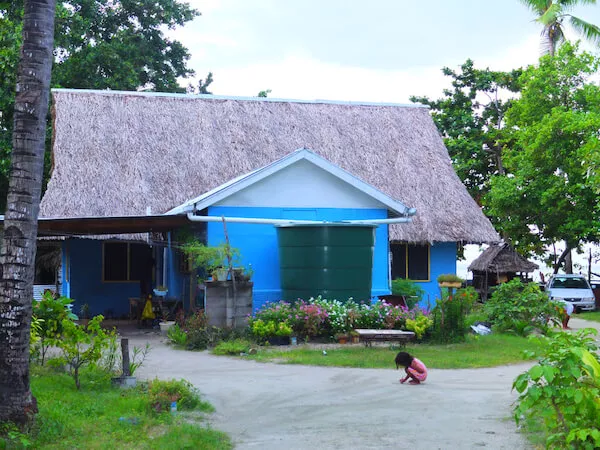
Facts about Kiribati | Economy
17. The natural mineral Phosphate is found right under the lime surface of the islands in Kiribati – as in neighbouring country Nauru.
Phosphate is used in fertilisers. Due to extensive mining the soil on Banaba is now very poor. People now only can live in the coastal area where mango, guava and taro are the main crops.
18. The main agricultural products are fish (mainly tuna and marlin), coconuts and copra. Deep-sea fishing is a major industry sector.
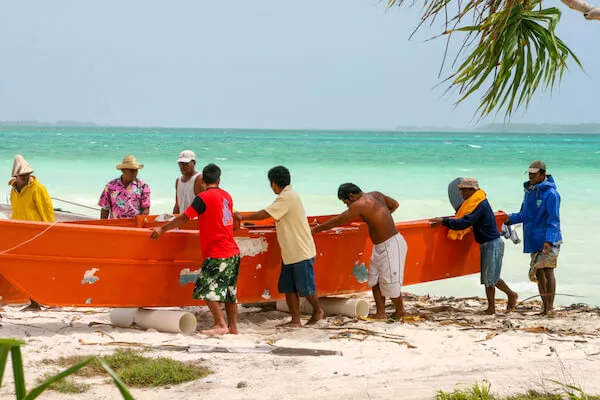
19. Kiribati moved the international date line eastwards, so the country could lie on one time zone. This move made Kiritimati island in Kiribati the first inhabited place to see in the new millennium in the year 2000.
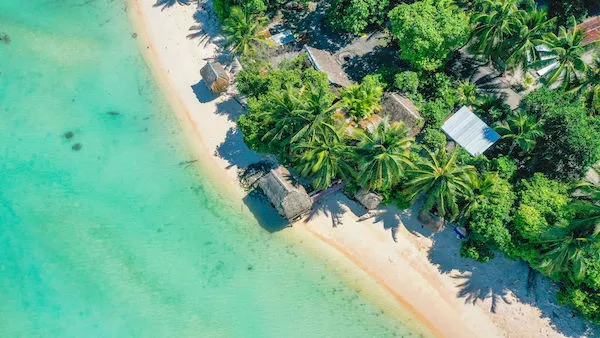
20. On Kiritimati are five villages. Interesting are the names of the villages: Tabwakea, the largest village, London, Banana, Poland and Paris (now only ruins to see).
21. The currency is the Australian Dollar.
22. The main trading partners are Thailand and Philippines for exports as well as China, Fiji and Australia for imports.
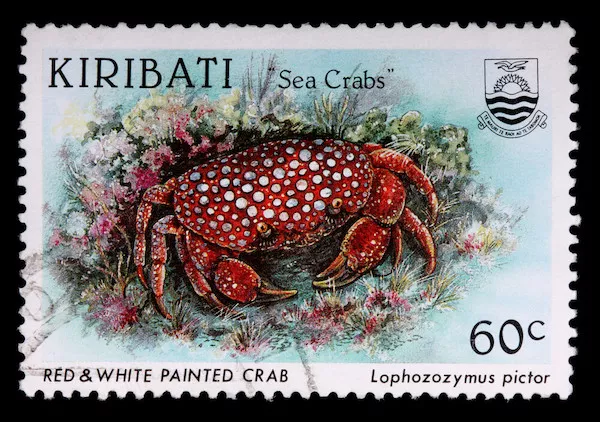
Facts about Kiribati | Animals
23. In Kiribati, there is only one animal found in the country that is endemic which means is only found here. This is the Bokikokiko, also called Kiritimati reed warbler, a small grey bird. The endangered bird lives in the scrublands of the island.
24. Coral reefs surround the islands. The reefs are home to 20 marine mammal species and just over 500 fish species but the habitat suffers from overfishing and heat stress due to climate change.
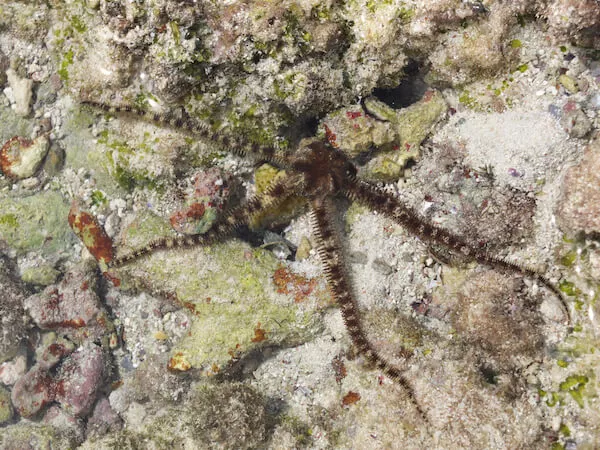
Sadly the Kiribati islands only have very low biodiversity due to earlier phosphate mining activities.
The Pacific Ocean waters surrounding the islands, however, are still rich in sea life but this is also the main income source for the people living in Kiribati. Overfishing is a main environmental issue.
Facts about Kiribati | Food
25. The only food widely available is seafood and coconuts.
The country imports about 50% of their food supply. Only few crops are thrive in Kiribati as the soil is very poor. Breadfruit, pandanus, papaya (paw paws), mango and taro are the main crops.
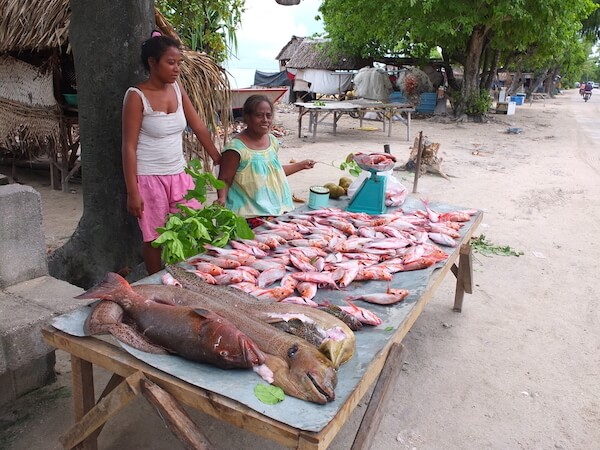
Popular dishes include seafood and coconut. Shellfish, prawns and crabs are served with every meal. Fish often is eaten raw, sashimi-style, or as salted sun-dried salt fish jerky.
